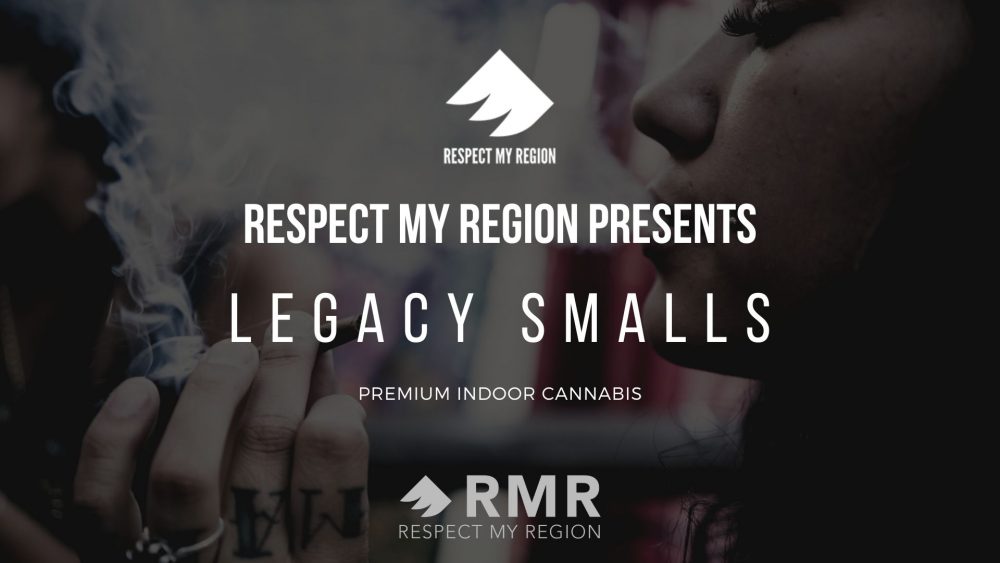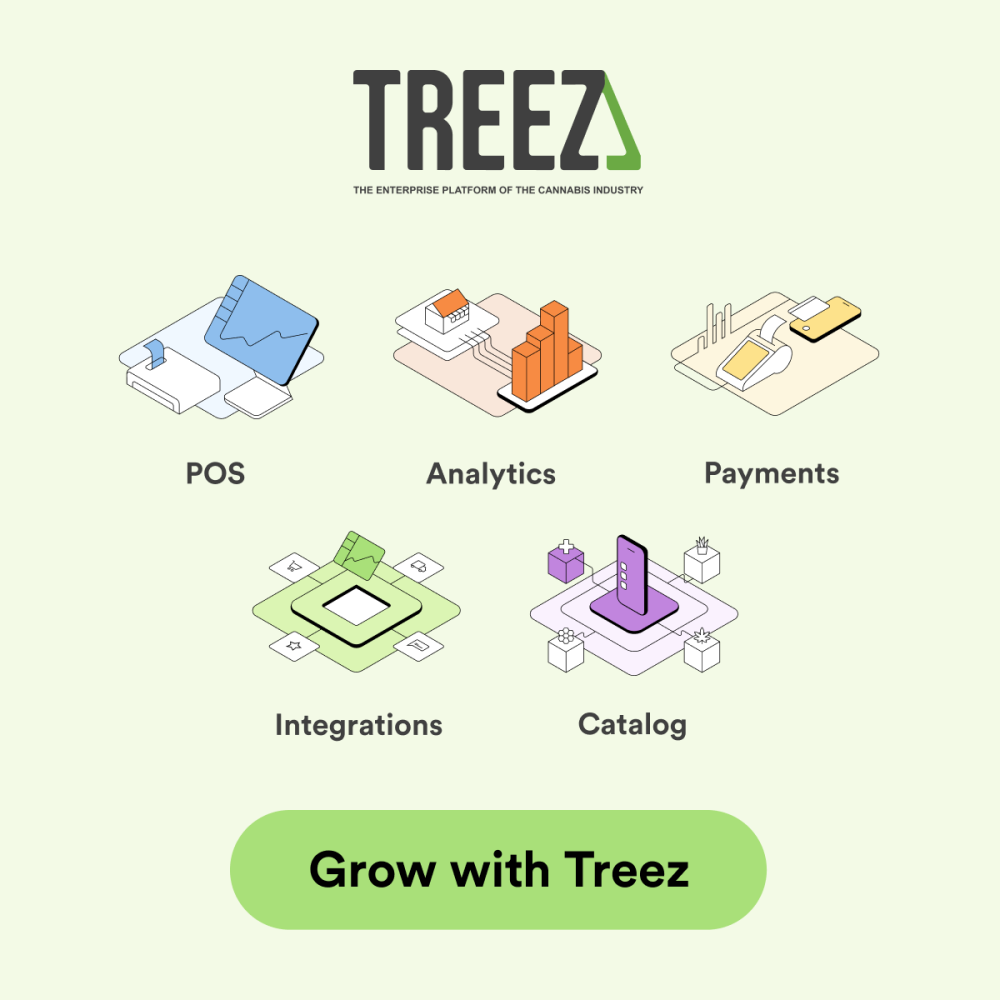As cannabis moves further into the mainstream, more people are turning to the plant as an alternative medicine and form of therapy. One of the most popular ways to consume, nowadays, is with cannabis-infused edibles. Most people, by now, have heard of edibles. Whether it’s the stereotypical stoner brownies or they’re familiar with the recreational gummies and various other candies available on dispensary shelves today. What most don’t understand or even are aware of, are the subtle nuances in effects when it comes to consuming edibles.
Consuming cannabis has a lot of variables, and the effects will vary person to person depending on their body chemistry. To figure out if edibles are the right method of consumption for you, there are a few things to consider. Throughout this article, we’ll be exploring the differences between consuming edibles versus inhaling cannabis through smoke and vapor.
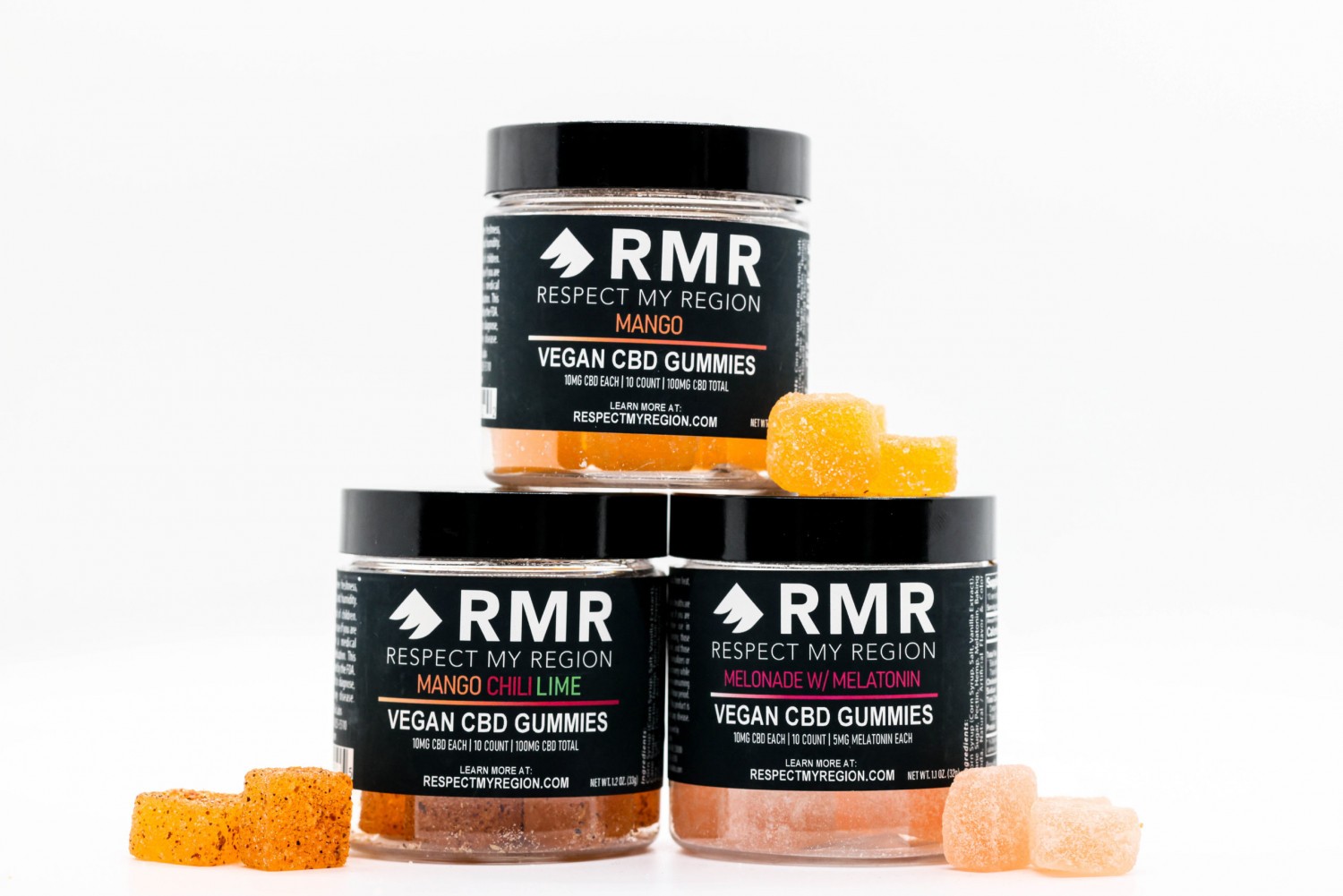
Respect My Region’s line of vegan CBD gummies
A Brief History of Cannabis Edibles
For starters, let’s begin with what a cannabis edible is; today there are a variety of different types of edible products on the shelves at dispensaries. These products range from solid edibles like gummies, chocolates, and cookies, to liquid edibles like tinctures and sodas. If you can ingest it safely and it has cannabis-infused into it, then it can be classified as an edible.
Throughout history, humans have been consuming cannabis in raw and processed forms for roughly 50,000 years. In Persia and India, a sweet treat called Mahjoun would be made with cannabis, sesame, and sugar. Also in India, people would make a cannabis-infused beverage called Bhang. The drink was popularized and consumed by the wealthy so much that it is still legal and served to this day.
One of the first recorded recipes for an edible was a recipe for Mahjoun. At the time, it was referred to as a fudge, and was published in The Alice B. Toklas Cookbook. Later, in the 1968 film, I Love You, Alice B. Toklas!, the Mahjoun fudge was substituted with brownies and the cinematic depiction stuck with consumers to this day. Shortly after that, in the early 1970s, activist Mary Rathbun became famous in San Francisco for her cannabis-infused brownies that she was selling. Notably, the first of many iconic cannabis-consuming “coffee shops” opened up in the Netherlands in 1972 and included “Space Cakes” on the menu.
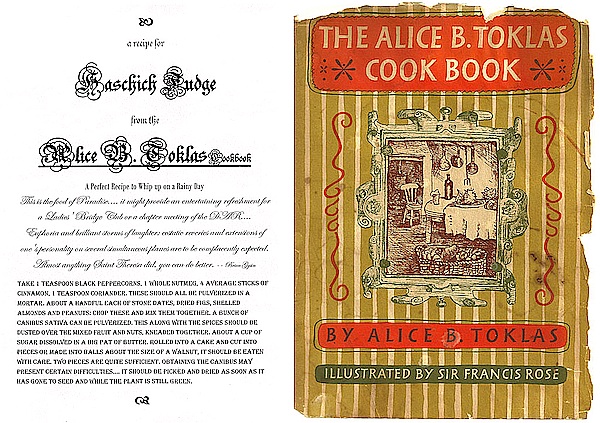
Recipe for hashich fudge from the Alice B. Toklas cookbook
Benefits of Eating Cannabis Edibles
Since these historical moments, cannabis edibles have expanded to include many different types of treats. But what are the benefits of eating edibles as opposed to smoking or vaping the flower?
- Avoid inhaling smoke which could damage your lungs.
- Edibles don’t leave a lingering scent.
- The effects last longer.
- More potent effects.
What Happens in Your Body When You Inhale or Ingest Cannabis
What happens when you inhale cannabis?
Inhaled cannabis goes into the lungs where millions of alveoli absorb the cannabinoids, and they get passed into the bloodstream. From there, they move into the brain and then spread throughout the body to bind with unique receptors within your endocannabinoid system, CB1 and CB2.
What happens when you ingest cannabis?
Eating cannabis brings it into your gastrointestinal tract where the cannabinoids get metabolized and partially absorbed. Then the cannabinoids travel to the liver where they are again metabolized and absorbed. So, you have a longer drawn out and more thorough process of absorbing the cannabinoids.
However, the conversion of the cannabinoids differs between the methods of consumption which can give off different effects, dependingly.
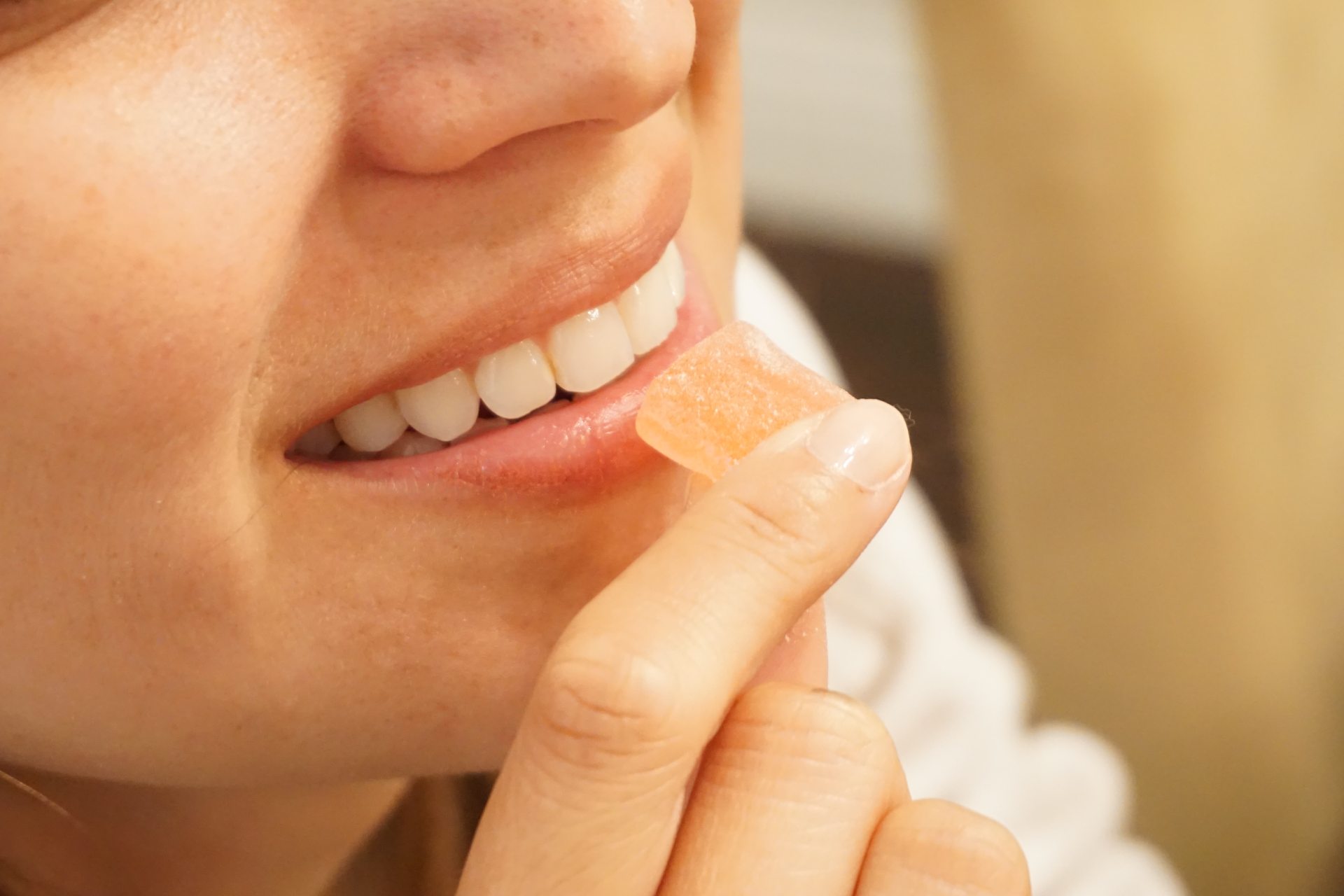
A person holding a gummy up to their open mouth | Photo by Elsa Olofsson on Unsplash
Cannabinoid Conversions Based on Consumption Method
In the raw form of cannabis, all cannabinoids start as cannabigerolic acid (CBGa). As the plant grows, the CBGa converts into different cannabinoids like Tetrahydrocannabinol-A (THCA), which is the raw form of THC and doesn’t impair cognitive function. When exposed to heat, the THCA converts to Δ9-THC which does produce an intoxicating effect.
When inhaling THC, the cannabinoids go straight to the lungs and are absorbed as is. On the contrary, after eating an edible, the liver metabolizes the Δ9-THC and converts it into 11-Hydroxy-THC. The cannabinoid has been shown to be 2-3 times more potent than the delta-9 version and produces a heavier, body-dominant kind of high. Not so fun fact, some people’s bodies won’t metabolize THC and edibles do absolutely nothing for them.
Now, a side note, our bodies do in fact create some 11-hydroxy-THC when inhaled but nowhere near how much is metabolized when eating edibles.
In recent years, the legal cannabis market has started to experiment with lesser-known cannabinoids which may actually be producing different effects. For example, cannabinol or CBN is being studied to be more of a sedative cannabinoid when consumed alongside CBD and especially THC. Whereas that mother cannabinoid, CBGa, when broken down into its non-acidic form, cannabigerol (CBG), is being studied as a potentially clear-headed focus-driven cannabinoid. Often providing more of a daytime appeal to its consumption. These cannabinoids might be the key to creating more unique effects, but more research is needed to make a definitive claim.
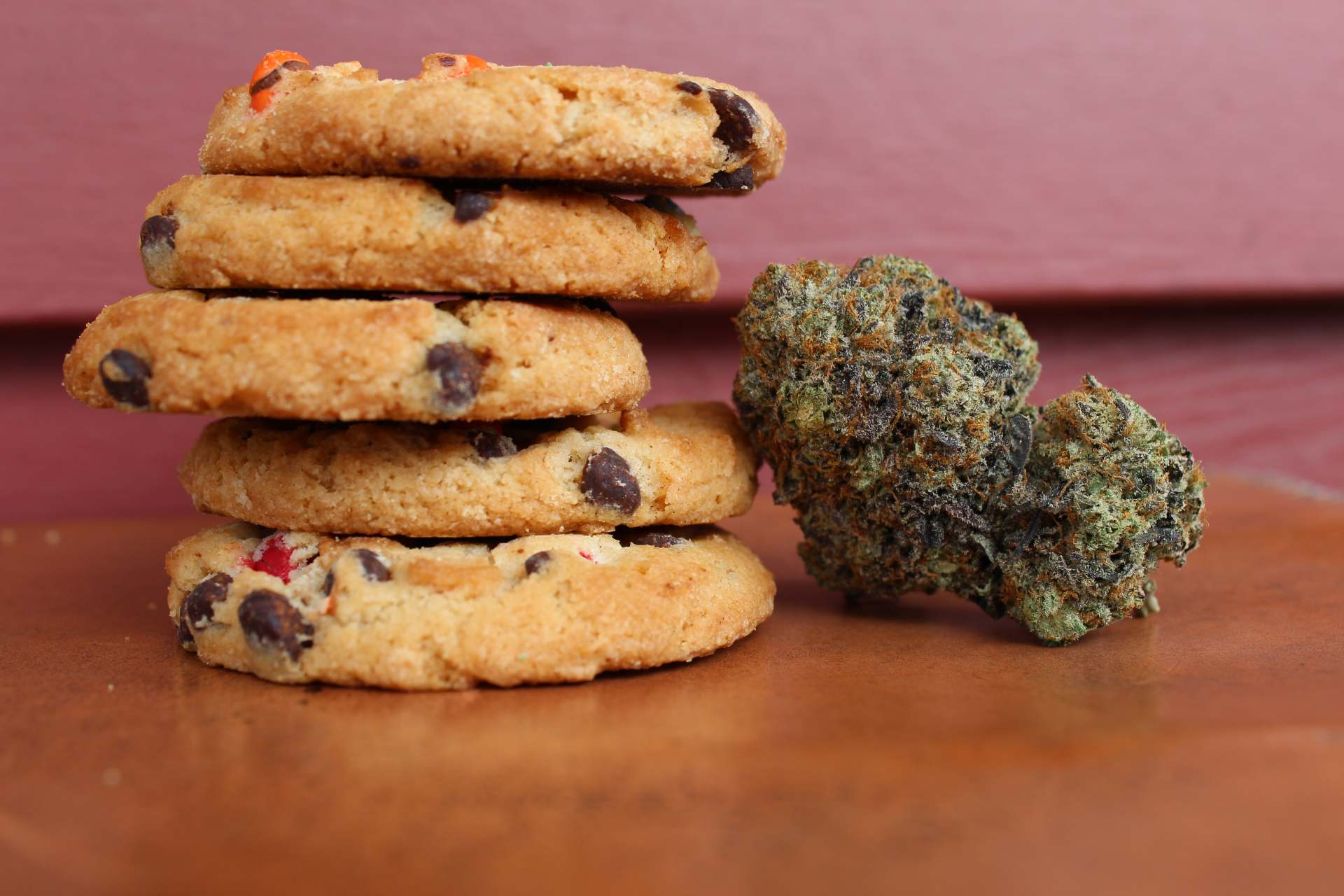
A stack of cookies next to a nug of cannabis | Photo by Margo Amala on Unsplash
Onset Time for Effects from Cannabis Consumption
Now, other than the cannabinoid component, a big difference between consumption methods is the onset time for each. When smoking, the peak effects are often felt within 10-20 minutes with those effects lasting, on average, 1-3 hours. Edibles, on the other hand, take much longer for your body to process them. It often takes 30 minutes to even two full hours to feel any effects. However, once those effects kick in, you can expect, on average, about 4-8 hours of effects.
Alternatively, the edible category of cannabis products does have an alternative absorption method. Sublingual absorption utilizes the thin and easily permeable mucus-membrane within your mouth. When you get products such as tinctures or lozenges, they typically are absorbed sublingually. This process avoids metabolizing the cannabinoids through the liver. Which, usually, ends up giving it an effect that is somewhere between inhaling and ingesting.
THC is Fat Soluble
Another massive factor that is going to affect the outcome of your edible experience is the amount of fat you’ve taken in that day. Studies have shown that when edibles are ingested alongside dietary fats, there is a 2.5 to 3-fold increase in systemic exposure to THC and CBD, well at least in rats. So, the more fats you have in your diet, the more likely the THC is going to stick around in your system.
Also keep in mind, the more food you have in your stomach at the time you’re eating edibles, the longer they will take to kick in. Although, if you have eaten a fatty meal, it will take a long time but will usually hit you much harder when it does finally kick in.
The fact that THC is fat soluble leads to another interesting occurrence called re-intoxication. Since THC loves fat, it often gets stored in fat cells in your body for a long time. If someone were to diet and start to burn off that fat, the THC may actually flood back into your bloodstream. Which may lead someone to experience that feeling of intoxication even if they haven’t ingested cannabis recently.
Outside Influences
All of the factors above are based on science and how the body functions. However, outside influences can play a big factor in the effects edibles produce.
If someone went to work all day and they’re exhausted by the end of it, that edible they take to relax might seem like it hits harder because the body is already tired. If someone consumed a ton of caffeine to the point that their energy levels outweigh the heaviness of an edible’s body high, it may seem more social. Did you eat that edible then sit down and remain sedentary, or did you ingest then get up and get active? Are the lights dim and cozy or is it a bright sunny day? Setting and environment may play a part of how an edible may affect somebody.
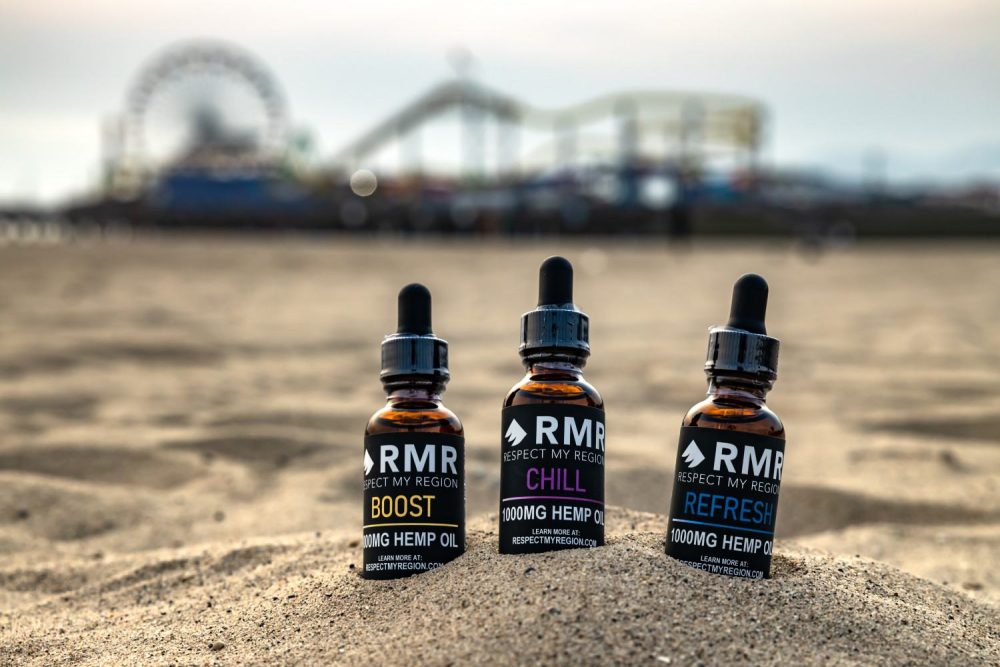
Respect My Region’s line of CBD-infused tinctures
Average Dosing for Cannabis Edibles
A lot of people have trauma from eating cannabis-infused brownies back in the day when people had no idea exactly how many cannabinoids were in their batch. One brownie could be anywhere from just a few milligrams of THC to potentially 100s of milligrams for one dosage. There wasn’t a great way to regulate it. Quite honestly, I don’t think regulating the amount within was even on anybody’s mind at the time.
Today, we can easily regulate how many cannabinoids we ingest. There are legal requirements that states put into place to help consumers better manage their dosage. According to Washington state legislation, 10mg of THC is an average dose. However, 10mg can sometimes be overwhelming for certain people. If there is any apprehension before eating edibles, taking a half-dose of 5mg is recommended to start with.
Easing Into Cannabis Edibles
Now, if THC is entirely too overwhelming for a consumer, adding in some CBD can help mitigate the high. It doesn’t get rid of the high entirely, but it can reduce the negative psychiatric effects. “CBD functions as an allosteric receptor modulator, which means that it can either enhance or inhibit how a receptor transmits a signal by changing the shape of the receptor,” per Project CBD. It has been identified as a negative allosteric modulator to the CB1 receptor which is concentrated in the brain and central nervous system. CBD doesn’t actually bind to this receptor. Instead, it changes the shape of it to weaken the bond THC can have with it which results in less negative psychiatric side-effects.
On top of that, CBD is also a positive allosteric modulator for the GABA-A receptor, which helps mediate the sedative effects that Valium and other Benzos may give you. CBD, however, reduces anxiety by actually changing the shape of the GABA-A receptor in a way that amplifies the natural calming effect of GABA. So, when you eat CBD-rich edibles, you experience a calm and relaxing sensation without the euphoric or dysphoric feeling associated with THC.
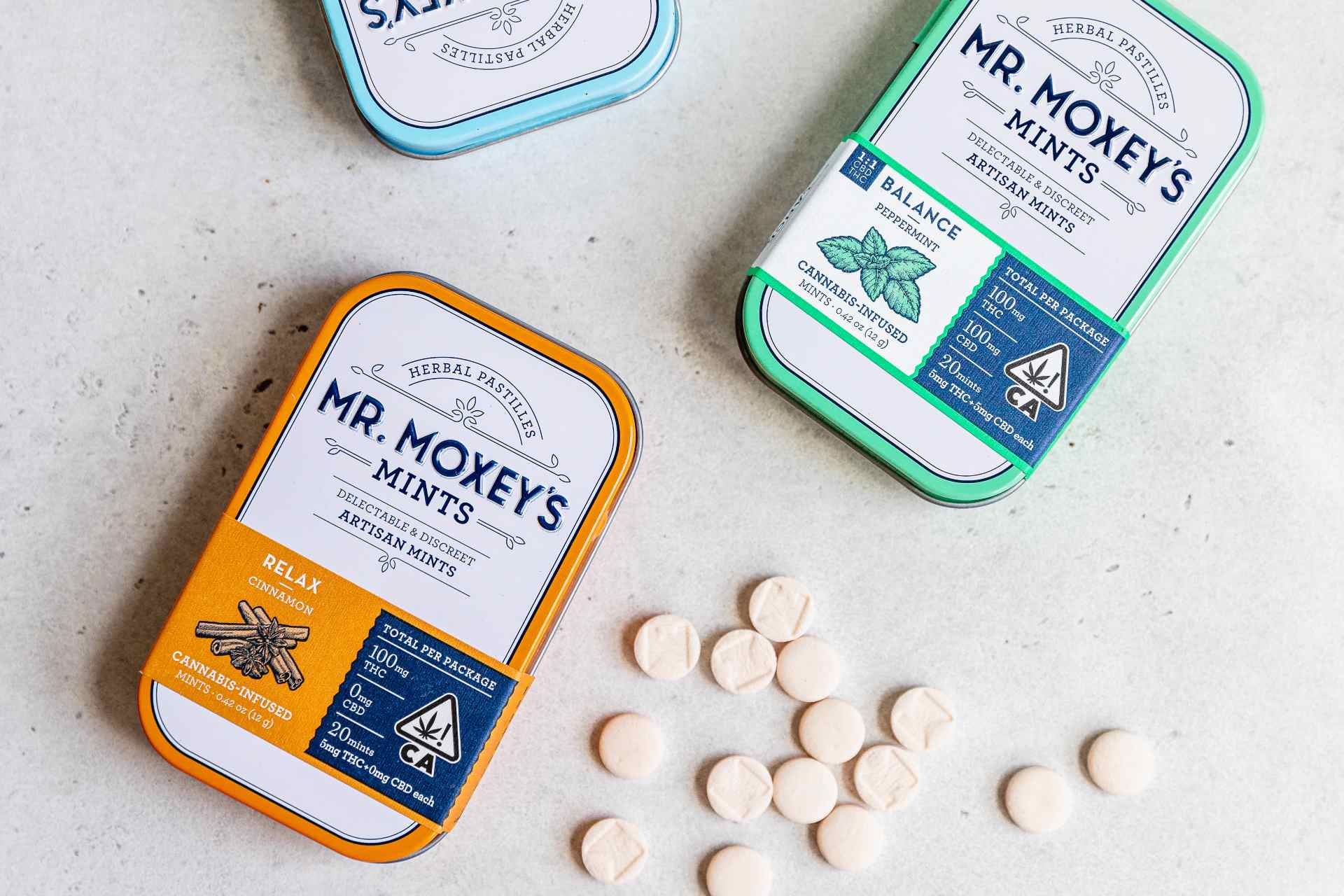
A variety of Mr. Moxey’s Mints | Photo by Margo Amala on Unsplash
The Role Terpenes Play in Cannabis Edibles
When inhaling cannabis, terpenes and flavonoids provide the flavor and smells that you experience. These compounds don’t actually bind to your cannabinoid receptors but instead seem to act like they do in aromatherapy, creating the uplifting or relaxing effects that people experience.
However, when talking about edibles, you can’t really smell or taste the terpenes and flavonoids. So, we end up talking about what the bioavailability of those terpenes are. When studied, researchers found that not very many terpenes make it through to the blood plasma. Some did make it through, but that’s also not to say that the terpenes don’t take effect before they even make it to the metabolizing stage.
Also, terpenes are volatile organic hydrocarbons and are incredibly sensitive to heat; as a result the terpene profile of specific cannabis strains can be diminished during the product manufacturing process. In recent years, edible manufacturers have been extracting cannabis terpenes and adding them into edibles after the fact to produce those therapeutic effects the compounds have become known for. However, not all manufacturers do this.
The most common base for edibles in today’s market is a distillate oil. This is where an extractor refines the oil down to just cannabinoids without any terpenes or additional plant matter that makes up a full-spectrum extract. So, a majority of edibles nowadays don’t even have the terpenes in them to help direct the effect of the high.

A bowl full of a bright green badder. | Photo by Correen on Unsplash
Why Indica and Sativa Edibles Don’t Matter
Now that we’ve covered the science behind edibles and what’s happening in your body when you ingest them, we can have the conversation regarding indica versus sativa edibles. Marketing tactics are solely responsible for consumers thinking that there is a difference in the effects that different edibles produce. Unfortunately, based on science and availability of products, a lot of the differing effects don’t actually come into play for the edibles on the legal market.
Most edibles nowadays use a distillate oil that only contains one cannabinoid within it. More often than not, that one cannabinoid is THC. As was discussed earlier in the article, THC converts to a more potent, body-dominant kind of high when processed through the liver. So, for a majority of edibles, this is the kind of high one can expect to experience.
Where the Potential for Effect-Based Cannabis Edibles May Come From
A couple of factors are still being explored to maybe have a potential way to guide the high; the lesser-known cannabinoids we discussed earlier, and the terpene content in edibles. However, most companies do not use a full-spectrum oil that still contains the terpenes or other cannabinoids.
Even if the terpenes were still contained within the edible and made it through the manufacturing process, the bioavailability is usually too low to cause an effect. On top of that, unless you’re choosing the sublingual method of consumption, the terpenes won’t be in the mouth long enough to absorb directly into your system, passing them off to the metabolizing process which we’ve seen through science doesn’t allow too many terpenes to pass through to the blood plasma.
Earlier, I discussed the lesser-known cannabinoids and how they may be the key to creating effect-based edibles. CBG and CBN are the standout cannabinoid stars of the moment. Which, I’m not going to lie, seems promising for the people who desire a black and white difference. However, circling back to the biggest conundrum of cannabis – what affects you one way, may affect someone else in a completely different way. So, remove sativa and indica from your vocabulary. Focus on what makes you feel good instead of relying on marketing, which is telling you how it made somebody else feel.
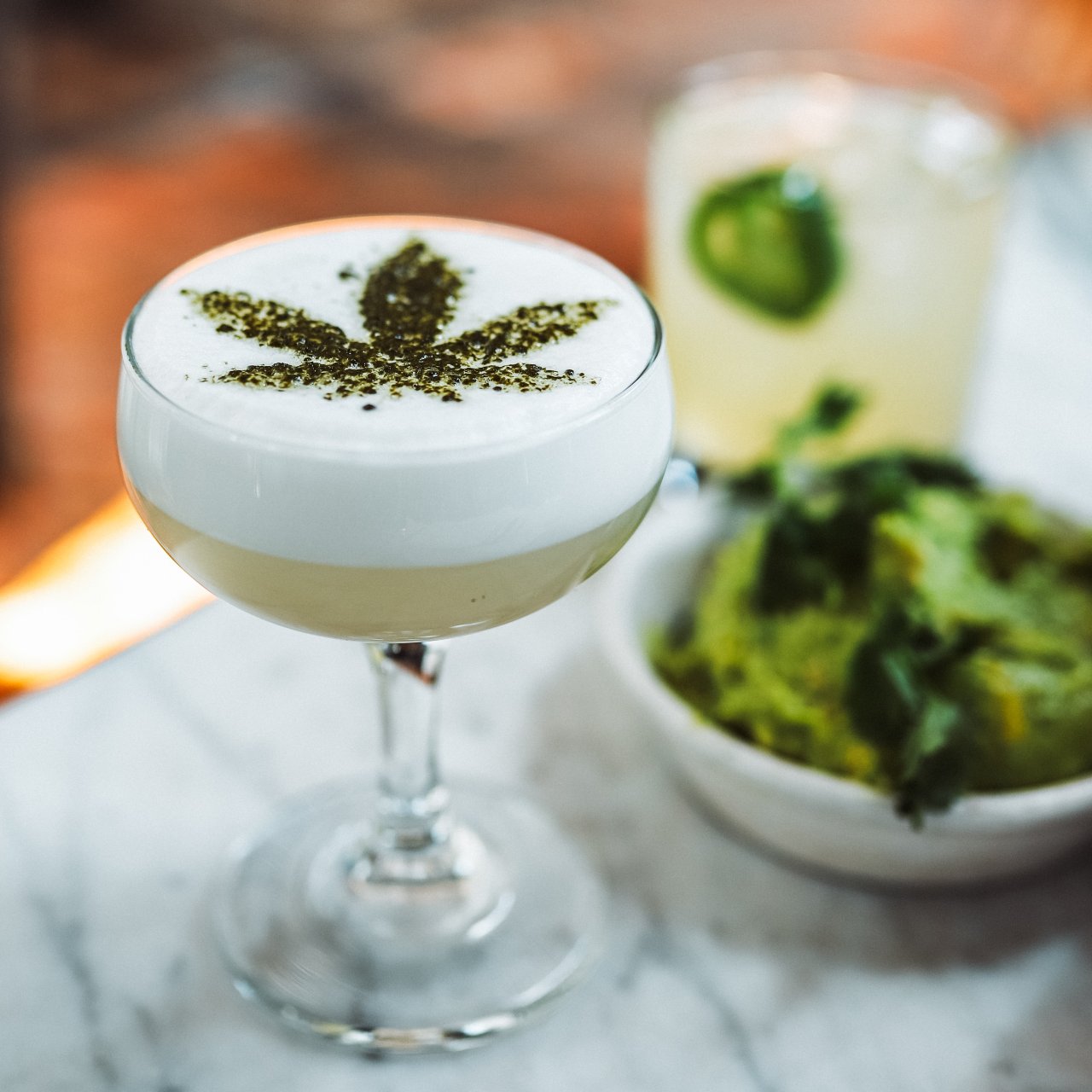
A cocktail with a cannabis leaf decorated on top of the foam of the drink. | Photo by Justin Aikin on Unsplash.
In Summary
The biggest thing to remember with edibles is to go low and slow with them; you can always eat more; you can’t eat less. Sativa or indica specific edibles don’t exist, but there are methods of consumption that may produce less of an intense body high, as well as lesser-known cannabinoids which may help alter the effects of edibles.
If there is any sort of apprehension before consuming edibles, consider taking a half dose or adding some CBD into the mix for a more mellow experience. When in doubt, start with a CBD-rich edible and slowly incorporate THC into your system over time. Also, remember your body will start to build up a tolerance for cannabis if you use it regularly. So, eventually those bigger dosages of THC won’t seem so overwhelming if you build up to it gradually, and the end result will hopefully be a happy one.
More Content
THE RELATIONSHIP BETWEEN BACKWOODS AND HIP-HOP
TERPENES FOR ANXIETY: 3 TERPS IN CANNABIS WITH STRESS-RELIEVING PROPERTIES
RAPPER WEED: WHICH RAPPERS HAVE CANNABIS PRODUCTS IN THE MARKET? WHO ACTUALLY HAS THE FIRE?
18 COMPANIES THAT DON’T DRUG TEST THEIR EMPLOYEES FOR WEED
7 TIPS FOR MARKETING CANNABIS AND CBD ON TIKTOK AND INSTAGRAM
